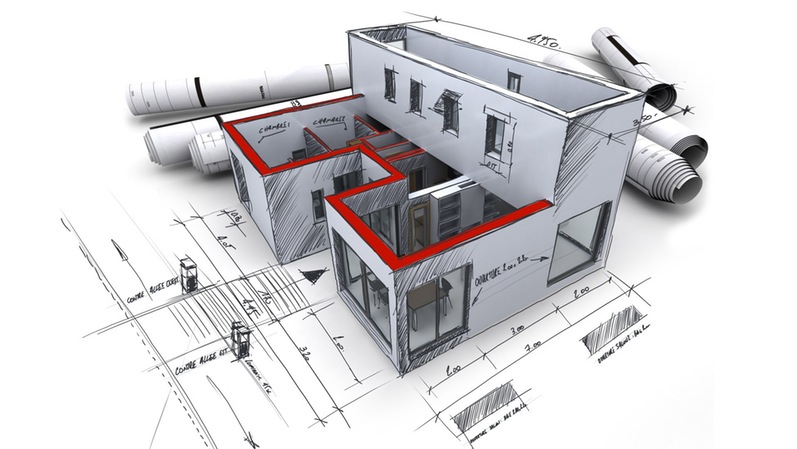Just How CDA Architects Provide Cutting-Edge Solutions for Lasting Design
Wiki Article
A Detailed Introduction of Building Designs and Their Influence on Modern City Planning and Development
Architectural styles have actually long served as a mirror to the social values and technological developments of their time, playing an important function in shaping modern city preparation and advancement. From the grandeur of Neoclassicism to the utilitarian strategy of Brutalism, each design has introduced unique principles that influence metropolitan visual appeals and performance.Historic Review of Architectural Designs
Throughout history, architectural styles have actually evolved in response to social, technical, and environmental factors. Each duration shows the dominating worths, beliefs, and developments of its time, bring about an abundant tapestry of layout that represents human creativity and adaptation. The old human beings, such as the Egyptians and Greeks, established foundational styles that stressed symmetry and proportion, offering both functional and aesthetic functions.As societies transitioned through the Middle Ages, Gothic architecture arised, characterized by its verticality and detailed detailing, mirroring the spiritual ambitions of the period. The Renaissance noted a resurgence of classic ideals, combining art and architecture in ingenious means that affected succeeding styles across Europe.
The Industrial Change introduced new materials and construction methods, triggering motions like Innovation, which challenged typical types and welcomed simplicity and performance. The 20th century saw a diversification of designs, with Postmodernism reacting versus the plain minimalism of its predecessor, including historic references and eclectic components.
Today, architectural designs proceed to progress, driven by globalization and sustainability issues, reflecting a dynamic interaction in between heritage and development. This historic introduction emphasizes the significance of style as a mirror of social evolution and as a stimulant for city growth.
Secret Architectural Styles Explained
The diversity of architectural designs shows the myriad influences that form our constructed environment, each personifying unique features and cultural relevances. Key architectural styles consist of Classic, Gothic, Baroque, Modernism, and Postmodernism, each standing for one-of-a-kind historic contexts and aesthetic approaches.Classical design, rooted in ancient Greece and Rome, highlights balance, proportion, and making use of columns. On the other hand, Gothic design, growing in the Center Ages, is defined by pointed arches, ribbed vaults, and flying buttresses, developing an ethereal quality in sanctuaries. Baroque style, arising in the 17th century, is marked by majesty, elaborate embellishment, and a vibrant interplay of light and darkness.

Recognizing these styles supplies insight into the cultural stories and technical advancements of their particular ages, highlighting exactly how design offers not equally as a sanctuary, but as a reflection of societal values and desires.
Influence On Urban Preparation
In shaping the development of cities, architectural designs significantly influence city preparation choices. The choice of architectural design frequently determines the looks, functionality, and overall personality of metropolitan atmospheres.Furthermore, architectural designs can influence zoning laws and land make use of policies. Urban organizers need to think about the dominating architectural patterns when making districts, making sure that new growths integrate with existing structures. This consideration fosters cohesive city landscapes and boosts neighborhood identity.
The execution this website of details building designs can likewise influence socioeconomic aspects within a city. For instance, premium modern styles may bring in affluent locals and services, causing gentrification, while a lot more budget-friendly housing services could prioritize useful and sustainable layouts to suit diverse populations. Ultimately, the interplay in between architectural styles and metropolitan preparation creates vibrant cities that reflect both historic context and modern needs, shaping the lived experiences of their citizens.
Sustainability and Modern Design
Building designs play a crucial function in attending to contemporary obstacles, specifically in the world of sustainability. As urban areas increase and environmental problems intensify, modern design increasingly welcomes sustainable layout principles that prioritize power effectiveness, resource preservation, and marginal ecological effect.Contemporary architectural activities, such as biophilic layout and environment-friendly architecture, supporter for structures that harmonize with their surroundings, utilizing natural materials and promoting biodiversity - cda architects. These designs often include renewable resource sources, such as solar panels and wind generators, to reduce dependence on nonrenewable fuel sources and reduced carbon impacts
Moreover, the integration of innovative technologies, such as smart structure systems, improves power monitoring, maximizing resource usage while making certain resident comfort. Ingenious water administration strategies, including rain harvesting and greywater recycling, additional add to lasting metropolitan settings.
Notably, sustainability prolongs past ecological issues; it includes social and financial measurements. By fostering neighborhood wellness and advertising inclusivity, modern architectural designs straighten with lasting development goals. As a result, the development of building techniques remains to shape resilient cities that not only satisfy the demands of the here and now yet also protect the future for generations to find.
Community Engagement in Design
Neighborhood interaction in style acts as an important bridge in between designers and the populaces they offer, making certain that the built environment mirrors the demands and desires of its customers. This joint procedure welcomes community members to contribute their insights and preferences, promoting a feeling of possession and obligation toward the areas they populate.Reliable area interaction uses numerous approaches, such as workshops, studies, and public online forums, to gather varied viewpoints (cda architects). These techniques help with a two-way dialogue, allowing architects to recognize local contexts while read more empowering homeowners to articulate their problems and desires. This inclusivity not just boosts the design quality yet additionally advertises social equity by dealing with the one-of-a-kind difficulties encountered by marginalized groups

Verdict
Building designs have actually greatly affected modern-day city preparation and growth, reflecting progressing social and technical contexts. The assimilation of historic aesthetic appeals with modern requirements promotes metropolitan atmospheres that prioritize sustainability and neighborhood interaction. As cities continue to grow and adapt, the ongoing discussion in between building heritage and contemporary style principles will continue to be crucial in developing comprehensive, vivid rooms that boost lifestyle and promote social equity. The future of urban development depend upon this harmonious equilibrium.Report this wiki page